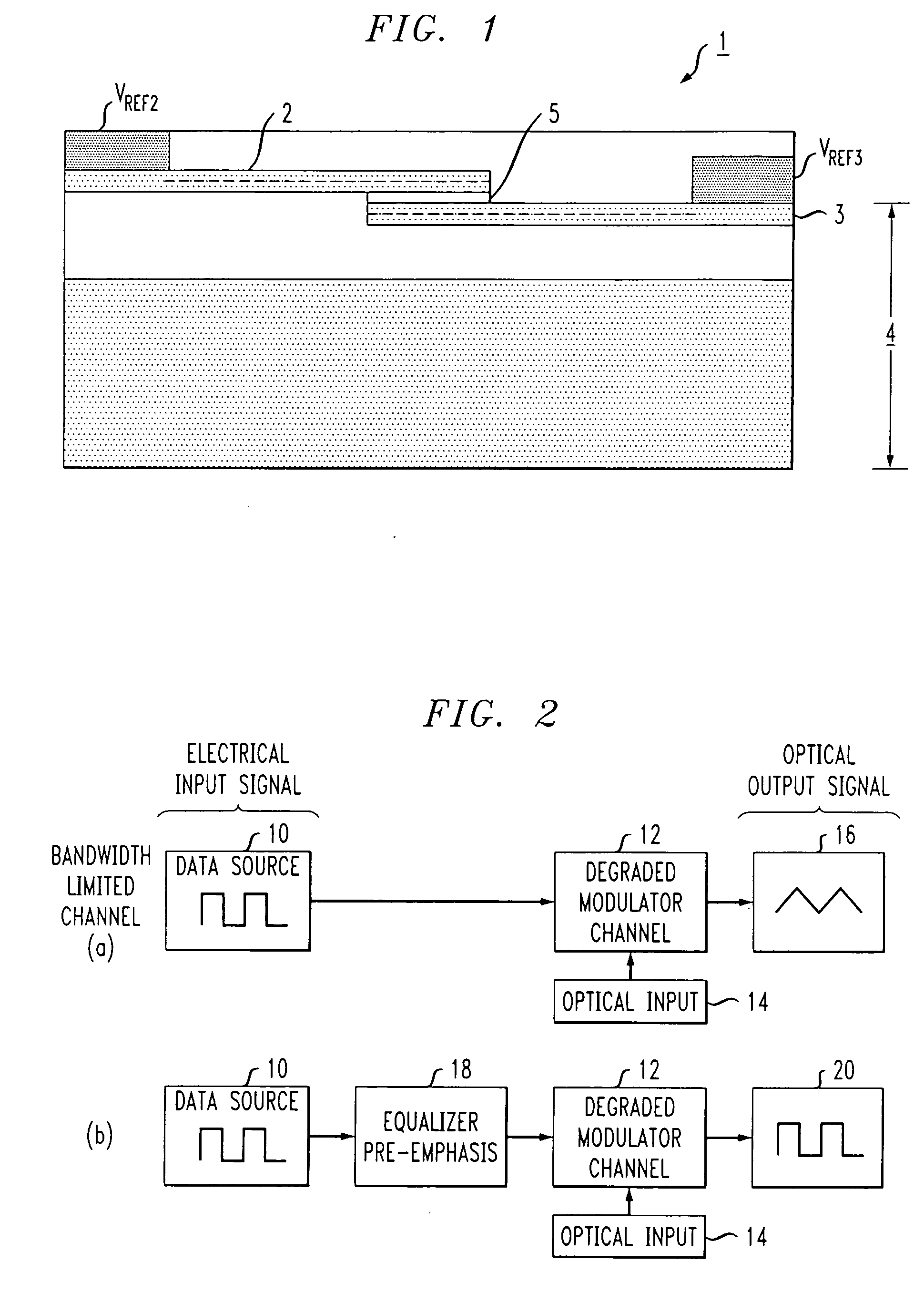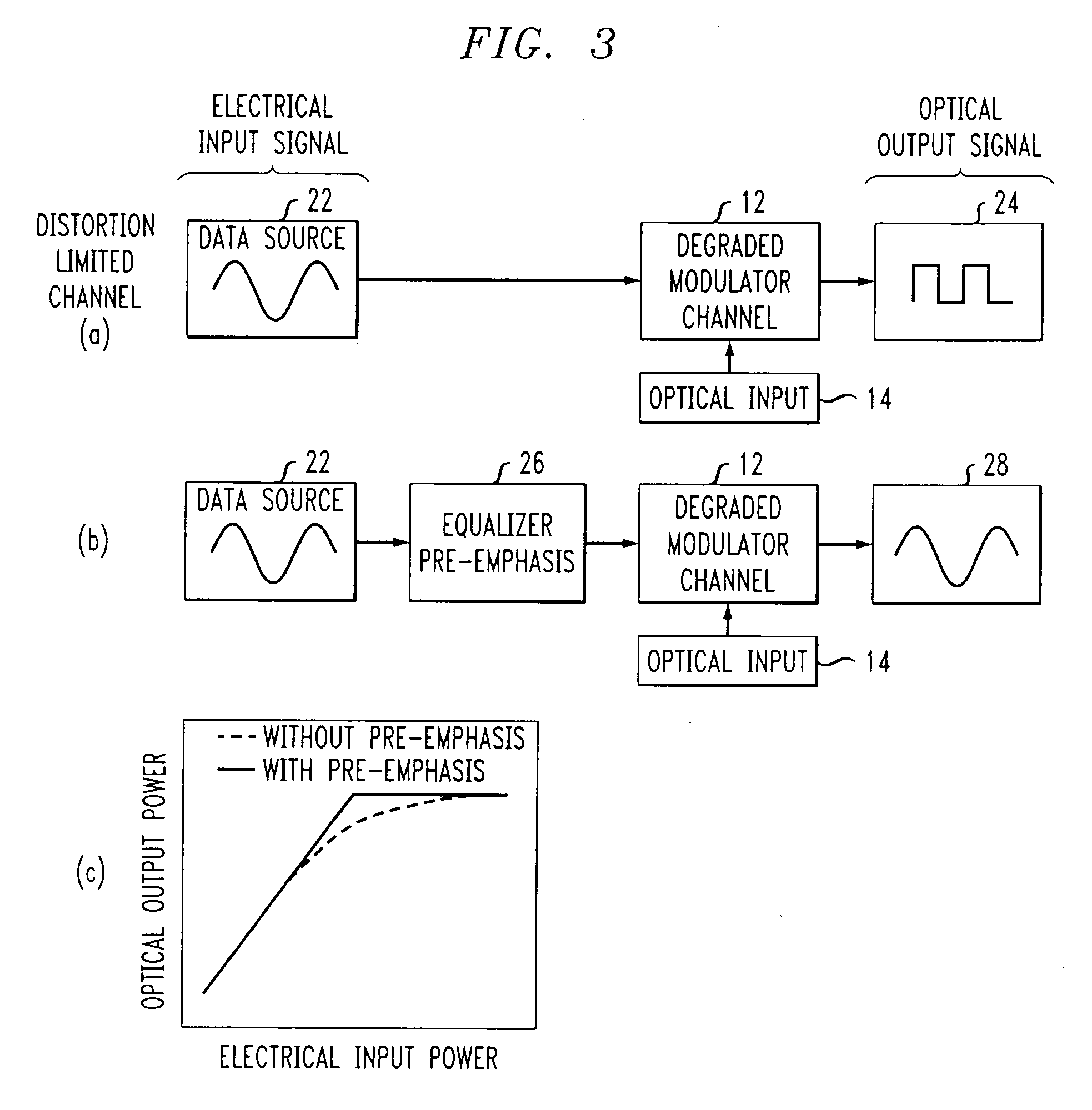High-speed, silicon-based electro-optic modulator with feedback control
a silicon-based electro-optic modulator and feedback control technology, applied in the field of silicon-based electro-optic modulators, can solve the problems of direct opposition of optical loss specification to the desire for high-speed operation, the dynamic behavior of the laser itself introduces distortion, and the use of lithium niobate-based optical devices in such situations is not an option, so as to reduce the pattern dependent jitter, increase the switching speed, and reduce the fall and rise time
- Summary
- Abstract
- Description
- Claims
- Application Information
AI Technical Summary
Benefits of technology
Problems solved by technology
Method used
Image
Examples
Embodiment Construction
[0030]FIG. 2 illustrates, in simplified form, a nonlinear channel equalization arrangement showing the use of an equalizer / pre-emphasis circuit of the present invention to improve the optical output characteristics of a high speed optical modulator. FIG. 2(a) illustrates a bandwidth limited channel arrangement, where an electrical input data signal from a data source 10 is applied as the electrical input to a silicon-based modulator structure 12, such as the modulator illustrated in FIG. 1. It is to be understood that the theory of the present invention is equally applicable to any type of electrically driven optical modulator, that is, a modulator where the refractive index properties of an optical waveguide are changed by modulating an electrical input signal to produce a modified optical output signal. Such electro-optic modulators include, but are not limited to, free carrier-based modulators, particularly silicon-based electro-optic modulates.
[0031] Referring back to FIG. 2, a...
PUM
| Property | Measurement | Unit |
|---|---|---|
| impedance | aaaaa | aaaaa |
| impedance | aaaaa | aaaaa |
| impedance | aaaaa | aaaaa |
Abstract
Description
Claims
Application Information
 Login to View More
Login to View More - R&D
- Intellectual Property
- Life Sciences
- Materials
- Tech Scout
- Unparalleled Data Quality
- Higher Quality Content
- 60% Fewer Hallucinations
Browse by: Latest US Patents, China's latest patents, Technical Efficacy Thesaurus, Application Domain, Technology Topic, Popular Technical Reports.
© 2025 PatSnap. All rights reserved.Legal|Privacy policy|Modern Slavery Act Transparency Statement|Sitemap|About US| Contact US: help@patsnap.com



